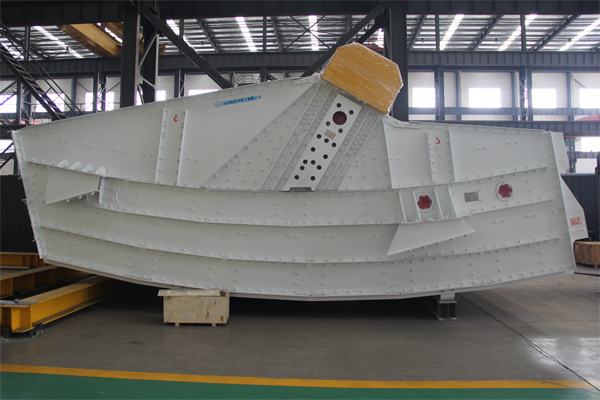Linear vibrating screen is a key equipment for material grading and screening in industrial production. It separates materials through the linear motion generated by the vibration motor. However, when the linear vibrating screen fails to achieve the expected screening effect, it may lead to a decline in product quality and reduced production efficiency. In order to solve the problem of the linear vibrating screen not being clean, it is necessary to conduct an in-depth analysis of the possible causes and propose corresponding solutions.
Reasons for the linear vibrating screen not being clean

1. Screen problem
The screen is a key part of the linear vibrating screen and directly determines the accuracy and efficiency of screening. If the screen is damaged, the aperture of the material passing through the screen may be inconsistent, resulting in incomplete screening. Screen blockage is usually caused by material accumulation or excessive particles, which reduces the effective area of the screen and affects the screening effect. In addition, if the screen aperture is not properly selected, it may also lead to inaccurate or inefficient screening.
2. Vibration motor failure
The vibration motor is the power source of the linear vibrating screen, and its performance directly affects the motion state of the screen body. If the motor fails, such as unstable frequency or insufficient amplitude, the screen body will not be able to generate enough vibration force, affecting the stratification and screening of the material. In addition, improper setting of motor parameters may also lead to uncoordinated movement of the screen body and reduce screening efficiency.
3. Influence of material characteristics
The characteristics of the material, such as humidity, viscosity, particle size and shape, will affect the screening process. For example, materials with high humidity are easy to stick to the screen, materials with high viscosity may cause the screen holes to be blocked, and materials with uneven particle sizes or irregular shapes may form bridges on the screen surface, which will affect the screening effect.
4. Equipment parameter setting problems
The working efficiency and effect of the linear vibrating screen are closely related to its parameters such as vibration frequency, amplitude and screen surface inclination. If these parameters are set unreasonably, the movement speed and path of the material on the screen surface may not meet the screening requirements, thereby affecting the screening effect.
Solutions to the problem of unclean linear vibrating screen

1. Inspection and replacement of the screen
Check the screen regularly, and clean or replace it immediately if it is damaged or blocked. For materials that are easy to block, you can consider using a screen cleaner or increasing the number of screen layers to increase the service life and screening efficiency of the screen. At the same time, select the appropriate screen material and aperture according to the characteristics of the material to ensure the accuracy of screening.
2. Maintenance and adjustment of vibration motor
Regularly check and maintain the vibration motor to ensure its normal operation. If the motor fails, it should be repaired or replaced in time. At the same time, according to the specific requirements of the screening task, adjust the vibration frequency and amplitude of the motor to provide appropriate power.
3. Pretreatment of materials
For materials with high humidity or high viscosity, pretreatment measures such as drying, heating or adding appropriate amounts of additives can be taken to improve the screening performance of the material. In addition, for materials with uneven particle sizes, they can be processed by pre-screening or crushing to reduce blockage of the screen.
4. Optimization of equipment parameters
The screening efficiency can be improved by optimizing the parameters such as the vibration frequency, amplitude and screen surface inclination of the linear vibrating screen. For example, increasing the vibration frequency can speed up the movement of materials on the screen surface and improve the screening rate; adjusting the amplitude can change the movement trajectory of the material on the screen surface, which is helpful for the stratification and screening of the material; and adjusting the inclination of the screen surface can affect the flow direction of the material on the screen surface, which helps to improve the screening accuracy.
The problem of unclean linear vibrating screen needs to be comprehensively analyzed and solved from multiple angles. Through regular inspection and maintenance of the screen, timely repair and adjustment of the vibration motor, proper pretreatment of the material and optimization of equipment parameters, the screening efficiency and product quality of the linear vibrating screen can be effectively improved. These measures can not only ensure the smooth progress of production, but also extend the service life of the equipment and bring better economic benefits to the enterprise.





